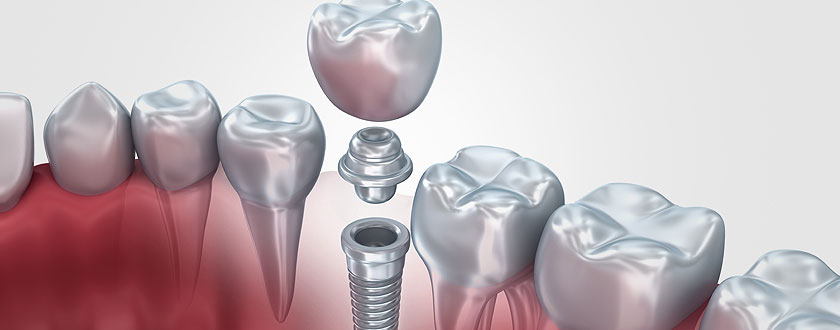
Dental Implant
Technically, a dental implant is an artificial tooth root that’s placed into your jaw to hold a prosthetic tooth or bridge. However, when most people use the term “dental implants,” they’re talking about the combination of the implant (the artificial tooth root) and the prosthetic tooth.
Dental implants may be an option for people who have lost one or more teeth due to periodontal disease, an injury, or some other reason and who prefer not to wear dentures.

- Endosteal (in the bone): This is the most common type of implant. Its various forms include screws, cylinders or blades surgically placed into the jawbone. Each implant holds one or more prosthetic teeth. This type of implant is generally an alternative for patients who are now wearing bridges or removable dentures.
- Subperiosteal (on the bone): This type of implant is placed on top of the jaw with metal framework’s posts that protrude through the gum to hold the implant in place. Subperiosteal implants are generally used for patients who are unable to wear conventional dentures and don’t have adequate bone height to hold an endosteal implant.